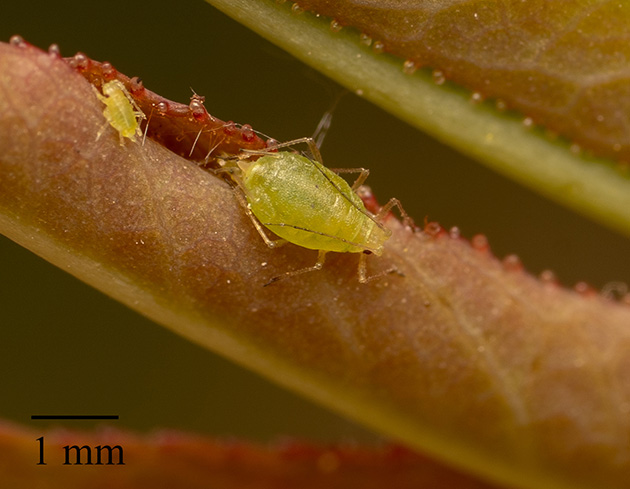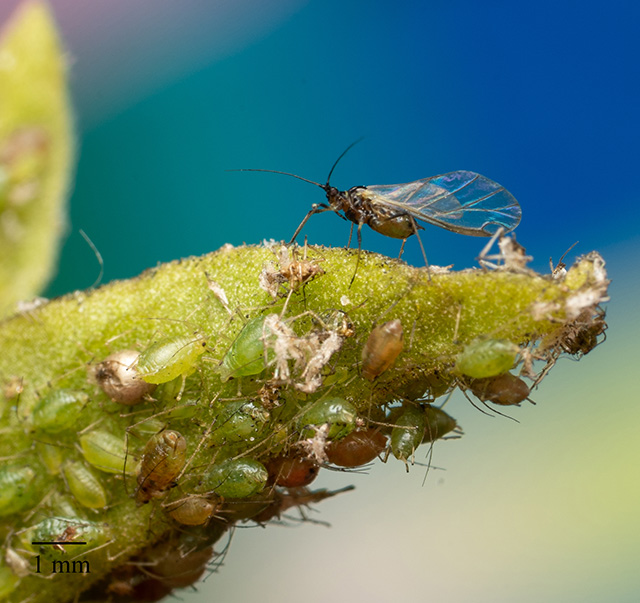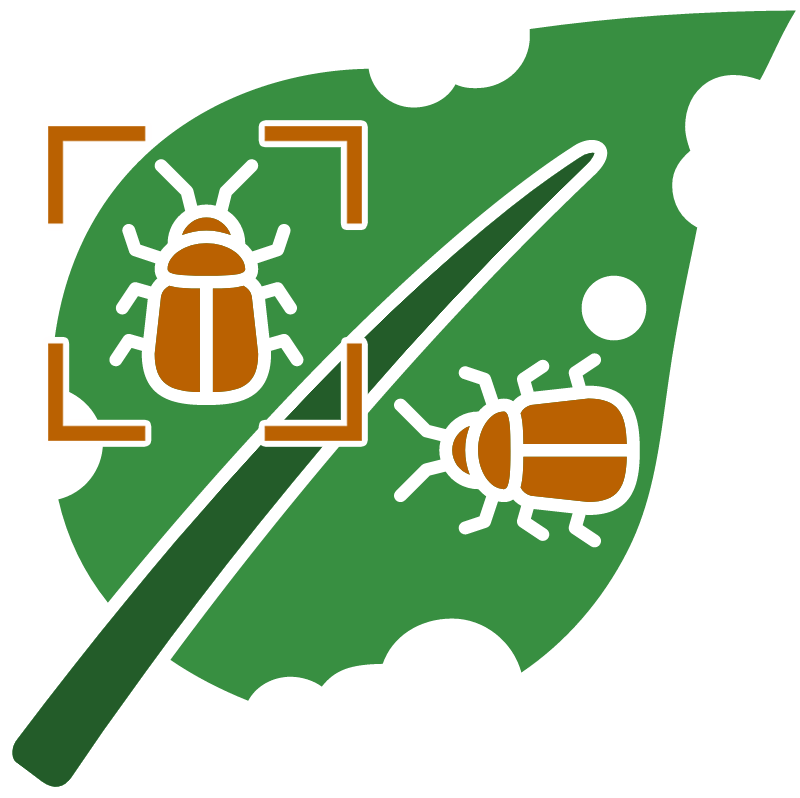

Category: Aphids
Green Peach Aphid (Myzus persicae)
Biology and life history: The green peach aphid is a worldwide pest of a wide variety of horticultural and field crops, weeds, and wild plants. The eggs of this aphid overwinter on Prunus trees and in the spring hatch into the nymphs that start feeding on young leaves, flowers, or stems. Winged forms then disperse to its many summer hosts where reproduction is by parthenogenesis (females producing live offspring without mating). In the fall, mating occurs, and females migrate to the main host where they lay egg that overwinter in bud axils and bark crevices of the tree. Winged aphids have a black head and thorax, and yellowish green abdomen with prominent dark dorsal patches.
Host plants and crop damage: Green peach aphid has a very wide range of host plants of more than 40 families during the summer generations. Its summer hosts range from vegetable crops (e.g., bean, beets, cabbage, turnip, mustard, potato, radish, spinach, squash, turnip) to field crops (e.g., tobacco, corn, pea, sugar beet, sunflower) to common weeds (e.g., field bindweed, lambsquarters, redroot pigweed). High density infestations, especially early season, can cause water stress and wilting, reducing plant growth. However, the special concern regarding this species is its transmission of more than 100 plant viruses through it which it causes major damage. Its populations occurring on herbaceous plants including weeds, vegetables, and field crops are frequently known to carry plant viruses such as Beet western yellows virus, Potato leafroll virus, Lettuce mosaic virus, Cauliflower mosaic, Turnip mosaic viruses, and Cucumber mosaic virus.
Management: For timely management of this pest, continuous monitoring and field scouting can help detecting the presence of the aphids or viral diseases. Crop rotations usually help breaking pest cycle but may not be effective to manage this aphid due to its very wide host range. Numerous natural enemies such as lady beetles, lacewings, syrphid flies, soldier beetles, big-eyed bugs, predatory midges, parasitic wasps, and entomopathogenic fungi are known to control green peach aphid populations. Supporting early season establishment of these beneficial insects is necessary for successful biological control of this pest. Depending on the mode of virus transmission, however, controlling this aphid may not be effective in preventing virus spread. In areas with high density of this aphid, insecticide could prevent the secondary spread of virus, but excessive and unnecessary use of broad-spectrum insecticide can kill the natural enemies that could further increase aphid populations.
